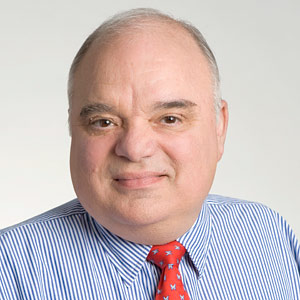Advertisement
From back door gigs to Duke Ellington's Orchestra, Boston's Harry Carney made the saxophone sing
Resume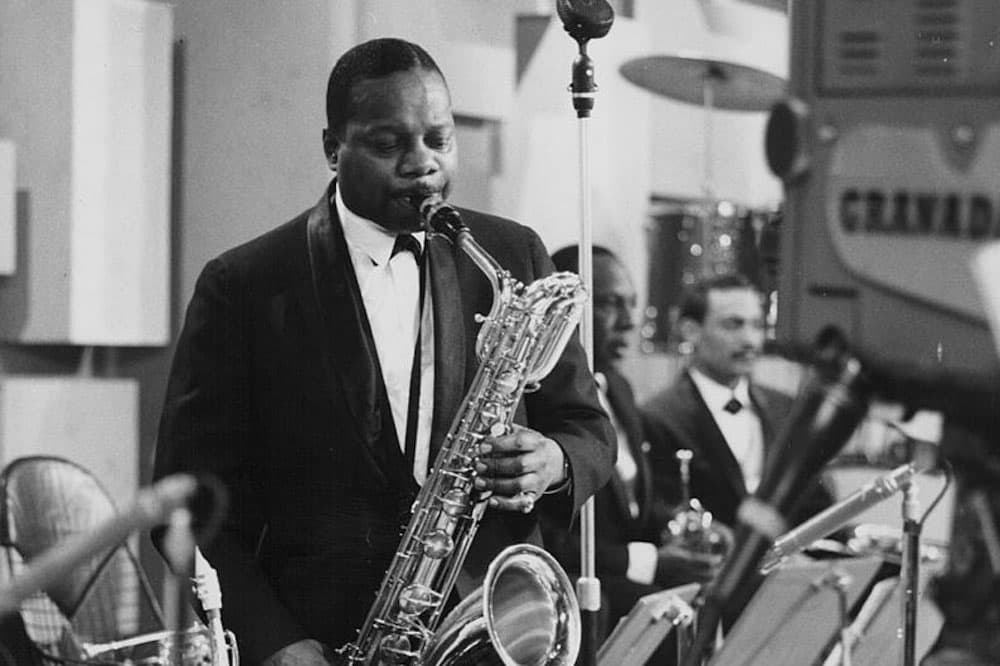
He is revered by many, if not most, baritone saxophone players as the “godfather” of the instrument. He could blow and hold notes on his saxophone like few other players then or since. He was a longtime, key member in one the most widely cherished big band jazz orchestras of all time, the Duke Ellington Orchestra.
His name was Harry Carney, and he was from Boston.
“Harry Carney’s musical career and his long, unbroken association with Duke Ellington are unique in jazz,” wrote renowned record producer Stanley Dance in 1961.
“Harry has a sound that has never been equaled for warmth or richness.”
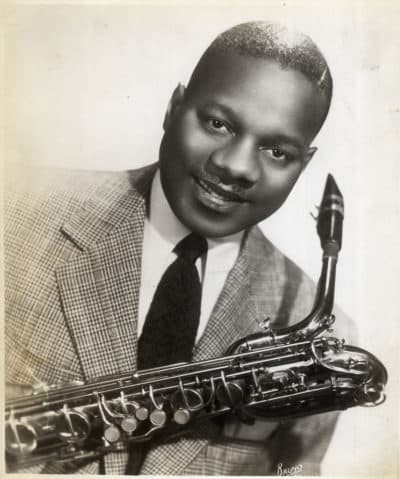
Carney is, in the words of jazz historian John Edward Hasse, an “undersung” jazz great.
Carney was born in Boston on April 1, 1910, and grew up in the South End. And though he traveled the world with the Ellington Orchestra, his story bookends in Boston, thanks to his saxophone.
His beginnings were modest, but musical.
“His dad was a porter. His mother was a domestic, which is a fairly common occupational division between mother and father of a Black family at that time” says Boston attorney, author, and jazz aficionado Con Chapman.
According to Chapman, the South End at that time was racially-mixed, working class, and a hotbed for nightlife.
There were saloons, pool halls, theaters, and house parties known as “rent parties” where people raised money for rent by charging at the door and selling liquor.
The neighborhood was also a fertile ground for talented young musicians. Some called it the “Saxophonists Ghetto” since it produced several players who went on to become jazz sax legends. Included in that group were swing saxophonist Charlie Holmes, who played with the Boston Civic Symphony, and Johnny Hodges, who also went on to play for Duke Ellington.
They all lived with a few blocks of each other in Boston’s South End.
Chapman, who wrote a book about Hodges called “Rabbit’s Blues: The Life and Music of Johnny Hodges”, says Carney and Hodges would get together in Hodges' home to listen to swing and jazz records on a wind-up 78-speed turntable. He says they also looked for gigs around Boston. “Back then, you have to understand that there was a house band in every major hotel in Boston, and sometimes young men would sneak around to the back entrance and ask, you know, if they could play.”
As a teenager Carney was playing the clarinet and alto saxophone professionally around Boston. In the summer of 1927, he also gigged prohibition-era jazz joints in New York, the Savoy Ballroom and the Bamboo Inn, places you went if you wanted to be seen.
There, Carney was spotted by Duke Ellington who invited him to play a few one-night sets in New England where it was cooler in the summer heat.
I was small in size, just a kid, see, and I wanted to sound like a man! This gruff, raucous sound gave me the feeling I was more masculine.
Harry Carney
Chapman says Ellington loved Carney’s tone. “He always tried to play a note with tone and to finish the idea as opposed to, you know, reeling off a barrage of notes and going very fast.”
Ellington was so impressed he wanted Carney in his band full time. So, Chapman says Ellington sweet-talked Carney’s mother into it. And it worked. Harry Carney left home, left Boston English high school, and joined Ellington at 17 years old.
In his very first week with Ellington, Carney added the baritone sax to his instrument mix. He talked about the move in an interview with ‘Crescendo Magazine’ in 1966: “I was small in size, just a kid, see, and I wanted to sound like a man! This gruff, raucous sound gave me the feeling I was more masculine.”
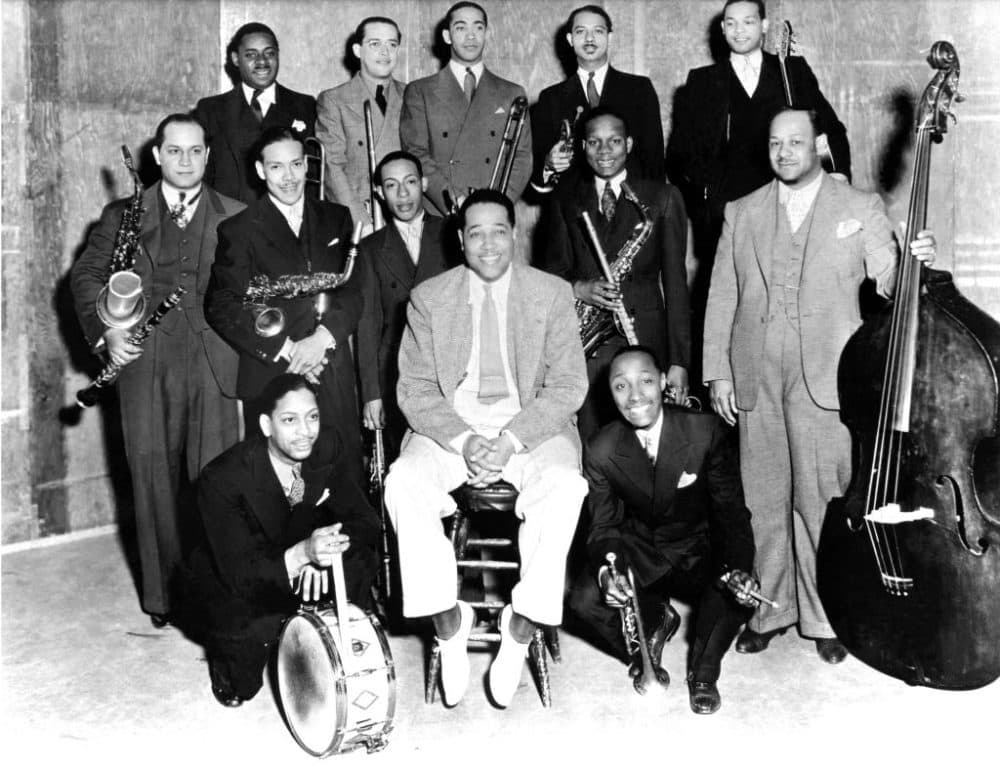
John Edward Hasse, Curator Emeritus of American Music National Museum of American History, who also founded the Smithsonian Jazz Masterworks Orchestra, says in adding baritone sax the musical collaboration between Carney and Ellington blossomed. “Harry Carney had a distinctive voice on the baritone saxophone. It was rich and expressive, and I think Ellington liked the individuality of his sound,” he says.
Carney switched to the baritone sax at a time when the baritone sax had yet to distinguish itself from its more popular alto and soprano brethren.
Invented in the mid 1800s, the saxophone was an oddball: in Chapman's words, a "brass-and-reed hybrid" with "no formal European playing style." Traditionalists at the Vatican, and in imperial Japan and czarist Russia condemned it for being, in their view, a sexualized instrument. At least one composer dubbed it the “Siren of Satan.”
By the early 20th century, the baritone sax was sometimes featured in jazz, but Hasse says Carney really pioneered its use. “Carney became the first, and for a while the only, important player of the baritone saxophone.”
To longtime professional baritone sax player Danny Harrington, who taught at the Berklee College of Music in Boston, Carney was both inspiring and unique. “There’s a sound there. There's a presence there that hadn't been heard. He was the first one to make that instrument truly speak. It's just like he's singing it to you through the horn.”
Grammy winning baritone sax player Lauren Sevian of New York, who also teaches at Berklee, calls Carney’s playing “just gorgeous” and adds “the thing that stuck out to me was this this notion of being able to sing through your instrument and the way that Harry approached the baritone, you could hear his voice coming through.”
For Sevian, no song exemplifies that more than Carney and the Ellington band playing “Sophisticated Lady,” one of the band’s signature songs.
Toward the end of “Sophisticated Lady” Carney would blow a note with his baritone sax that would last over a minute and would make audiences go wild.
Using a technique called “circular breathing,” Carney would power the instrument by inhaling through his nose while simultaneously puffing his cheeks and blowing out into the sax. Not many sax players have mastered this technique, including Danny Harington, who chuckles when talking about it. “ Believe me, I tried to do it a couple of times and I almost fell out of the chair. That's effortless for him. There's no end air. There's no stress, it's just amazing.”
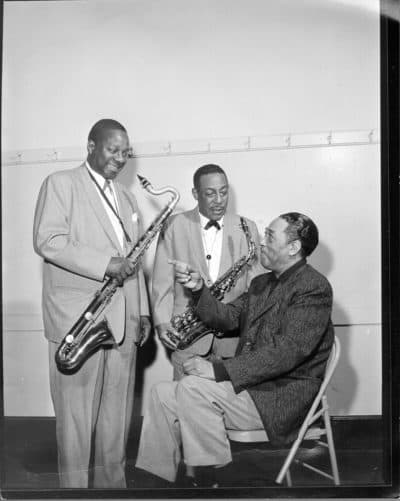
Carney played with Duke Ellington for decades, and in fact drove Ellington in Carney’s own car from gig to gig — while the rest of the band took a bus or a train. They logged thousands of miles, with the quiet, and modest Carney behind the wheel.
John Edward Hasse says the atmosphere in the car was perfect for Ellington’s creativity. “Carney wouldn't say anything, and Ellington could compose, sometimes even on the back of a matchbook cover or the back of a hotel stationary envelope. He just had all this music in him, and he had to get it out, and he liked riding with Carney for those reasons.”
But road life was not always easy.
They would frequently arrive in town only hours before a gig, play until the wee hours, get breakfast, a little sleep and hit the road again.
And much of their decades on the road came during the Jim Crow era.
Audiences were segregated, and Boston author Con Chapman says Black band members often could not eat or sleep in the same places they played. “Back then the first-class hotels weren't open to Blacks. When the Ellington band would come to a city, they would have to basically farm out the musicians, according to the Green Book. They would find out local homes where they could be put up. Sometimes those are homes were big enough to hold, like ten musicians.”
Just the same, the Smithsonian’s Hasse says Ellington intentionally traveled to the south for two reasons, first to reach African-American audiences with his music, and second: “To serve as an example of someone who is African-American, who's very distinguished, who's very charming, who's brilliant at what he does, who is successful.”
Hasse says because of that decision Ellington endeared himself to fans. “By the late thirties, Ellington was a cultural hero to many African Americans into jazz musicians. And I think he was aware of that growing a culture of weight he had and didn't want to exclude people.”
Harry Carney played for Duke Ellington for almost five decades and Hasse says Carney proudly wore the distinction of being an “Ellingtonian.”
When Duke Ellington died in 1974 Harry Carney was widely quoted as saying, “Without Duke I have nothing to live for.”
Hasse says Carney was devastated and died just 4 months later, at age 64.
“I think he died of a broken heart. The band was his family. Ellington was the head of the family, and for decades and decades it was Harry Carney. He was a key member of that family. And when the head of the family went, he just lost his reason to go on.”
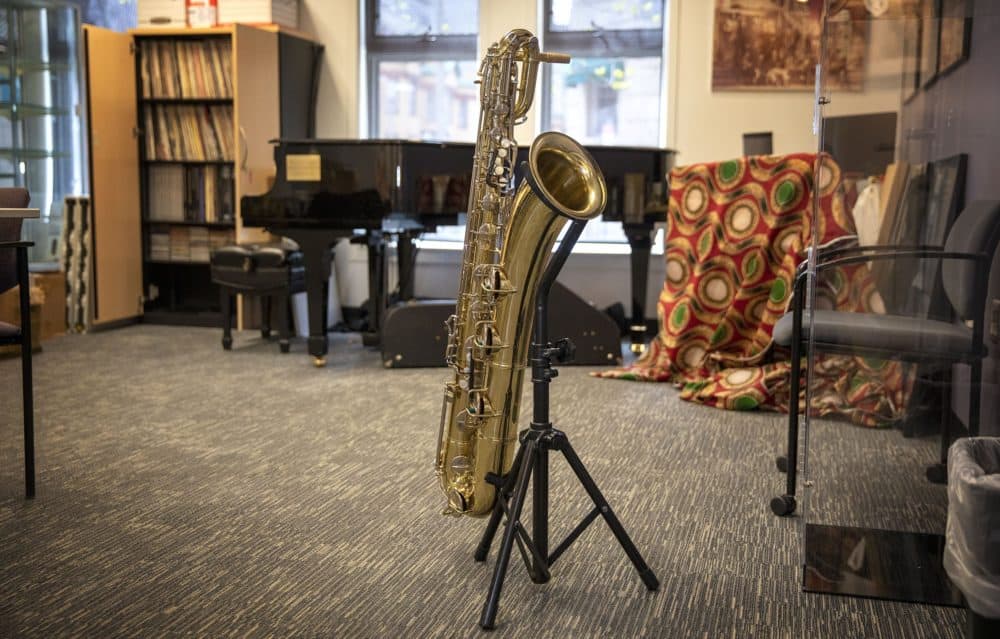
After Carney died his last baritone saxophone went to the jazz sax player Pat Patrick, who had his own 40-year association with a famous jazz band, and band leader, Sun Ra.
Pat Patrick’s son is former Massachusetts Governor Deval Patrick. “He (Pat Patrick) was one of the founding members of the Sun Ra Arkistra back in Chicago. But he played with everybody. He sat in with Duke Ellington a good deal as well,” Patrick says describing his father.
Patrick laughed when asked how it was that his father came into possession of the saxophone: “My father revered Harry Carney. But he was cheap and it's unlikely, it's unlikely that he, you know, competed in some auction for it. It's more likely it was gifted, or it was handed around and it ended up with my dad, but I don't know.”
Deval Patrick says his father played that saxophone for years as part of his instrument mix. “I knew he was good. I knew he was. I knew he was disciplined. He was deep, deep into his artistry.”
When Pat Patrick died in 1991, his family divided his possessions and that baritone saxophone went to his son, Deval.
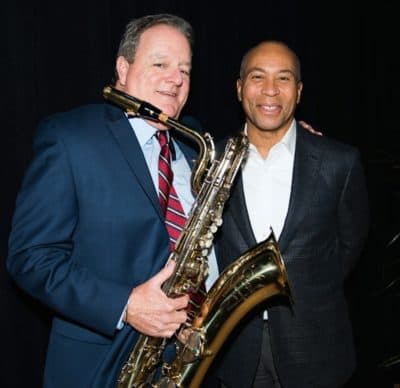
We asked the former Governor if he considered the sax, blown by two famous sax players, his father’s or Harry Carney’s, and Patrick chuckled at the question: “That's Pat Patrick's sax. Come on … but Harry Carney was the name I heard him talk about over and over again.”
Eventually Deval Patrick decided to donate that saxophone and his dad’s collection of music and papers to the Africana Studies Center at the Berklee College of Music.
To help confirm it was Harry Carney’s last saxophone, the school asked sax player Danny Harrington, who was teaching at Berklee then, to examine it. Harrington knew Carney’s sax was made by a famous baritone manufacturer; a company called “C.G.Conn.” He also knew it had an extra key, and that it had a bigger bell than normal. (The bell is that flare on the end of the saxophone.)
So, Harrington took a look. “I was a little hesitant at first, because suppose it is really Harry Carney's horn. And I opened it up and like that scene in Pulp Fiction, where Travolta opens the briefcase, and the glow comes out and I started to tremble. It was the horn. It was the exact horn!”
And at a formal ceremony at Berklee in late 2016, that baritone sax, blown so many years by Harry Carney and then by Pat Patrick, sang again. This time it was blown by Danny Harrington.
Among other pieces, Harrington played a tune Duke Ellington used as a sign-off to the band’s performances — “Lotus Blossom.”
Listen to songs featured in the audio version of this story.
This segment aired on April 29, 2022.
